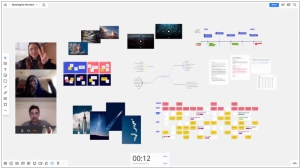LucidChart vs Miro
September 21, 2023 | Author: Adam Levine
28
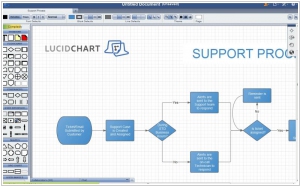
Lucidchart is the intelligent diagramming application that brings teams together to make better decisions and build the future. Flow charts, diagrams, UML sketches, and ER models have never been easier. We've redesigned the entire diagramming process to make it as easy as possible. Make flow charts, wireframes, mind maps, and org charts.
LucidChart and Miro are both popular online collaborative diagramming and visual collaboration platforms, but they have distinct features and focus areas. LucidChart primarily emphasizes creating professional diagrams such as flowcharts, wireframes, and network diagrams. It offers a wide range of pre-built templates and shapes, as well as robust integrations with other productivity tools. LucidChart is known for its user-friendly interface and powerful collaboration capabilities, making it a preferred choice for teams working on technical or business diagrams. On the other hand, Miro focuses more on visual collaboration and ideation. It offers an expansive digital whiteboard experience where teams can collaborate in real-time, brainstorm ideas, create mind maps, and organize visual information. Miro's strength lies in its flexibility, extensive set of collaborative tools, and integrations with popular productivity apps.
See also: Top 10 Visual Collaboration software
See also: Top 10 Visual Collaboration software
LucidChart vs Miro in our news:
2020. Miro lands $50M Series B for digital whiteboard as demand surges
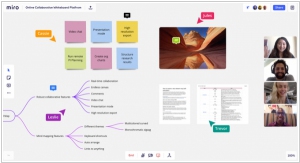
Miro, the creator of a digital whiteboard, is experiencing a significant surge in usage as businesses transition from physical workspaces to remote environments. In light of this, the company has recently announced an impressive $50 million Series B funding round. Miro sets itself apart by being more than just a lightweight add-in typically found in collaboration tools like Zoom or Microsoft Teams. It functions as a platform that integrates with various enterprise tools, much like Slack does for communication. This integration capability allows users to customize the base tool and build integrations with other commonly used tools, tailoring it to the specific needs of their teams or organizations. This approach has proven successful, with Miro reporting profitability and boasting more than 21,000 customers, including 80% of the Fortune 100 companies. Notable customers of Miro include Netflix, Salesforce, PwC, Spotify, Expedia, and Deloitte.
2018. RealtimeBoard, a visual collaboration platform for companies, raises $25M
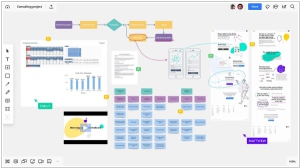
RealtimeBoard, an effective visual collaboration tool designed for distributed teams, has secured $25 million in Series A funding. The company intends to utilize the additional investment to support its ongoing expansion efforts. This includes enhancing customer acquisition capabilities through the strengthening of sales and marketing teams, as well as fostering growth within its user community. RealtimeBoard aims to develop a comprehensive visual collaboration platform that facilitates digital whiteboarding and serves as a central hub for integrating various collaboration tools utilized by organizations. Notable companies such as Hubspot, Skyscanner, Qlik, Autodesk, Netflix, and Twitter are among RealtimeBoard's esteemed customers, with the platform boasting a user base of 2 million worldwide. The startup generates revenue by offering its software-as-a-service (SaaS) on a per-seat basis for teams or entire companies.
2018. LucidChart raises $72 million to grow the web-based diagramming software
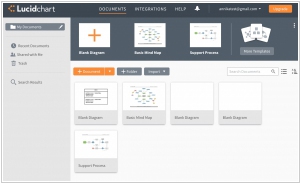
Web-based visual design platform Lucid Software has successfully secured $72 million in funding through a recent investment round. Established in 2010, Lucid Software is renowned for its flagship product, Lucidchart, which resembles Microsoft Visio and functions as a collaborative diagramming application for wireframing, UI prototyping, and various similar applications. Users ranging from freelancers to students can utilize this software to create a wide array of visuals, including organizational HR charts. Noteworthy competitors of Lucidchart include tools developed by Adobe and Microsoft Visio, while other prominent players in the field encompass SmartDraw, Gliffy, and the open-source Draw.io. Lucidchart aims to distinguish itself by offering a seamless user experience, compatibility across multiple devices and platforms, real-time collaboration, and advanced functionality such as automated diagrams and integration with external data sources.

